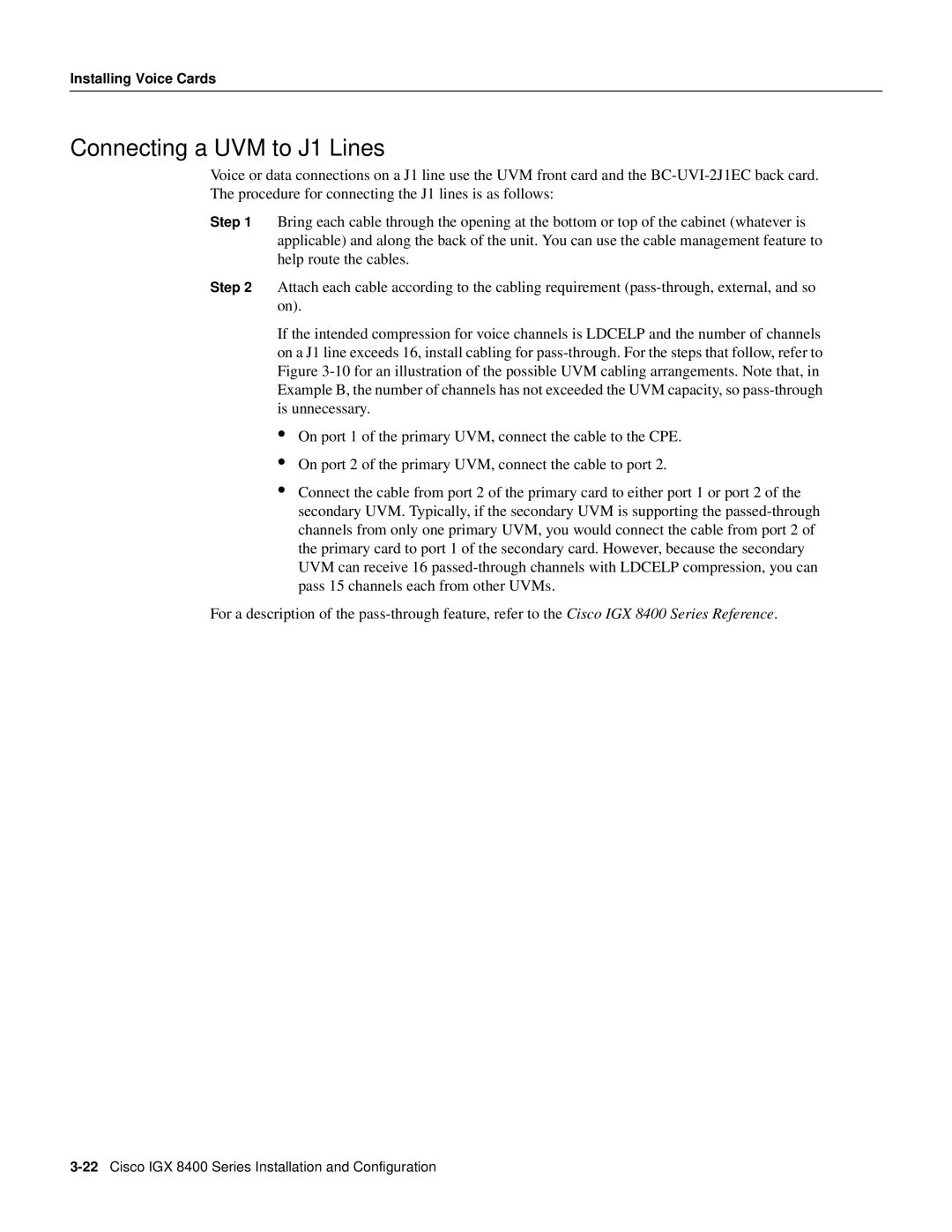Installing Voice Cards
Connecting a UVM to J1 Lines
Voice or data connections on a J1 line use the UVM front card and the
Step 1 Bring each cable through the opening at the bottom or top of the cabinet (whatever is applicable) and along the back of the unit. You can use the cable management feature to help route the cables.
Step 2 Attach each cable according to the cabling requirement
If the intended compression for voice channels is LDCELP and the number of channels on a J1 line exceeds 16, install cabling for
•On port 1 of the primary UVM, connect the cable to the CPE.
•On port 2 of the primary UVM, connect the cable to port 2.
•Connect the cable from port 2 of the primary card to either port 1 or port 2 of the secondary UVM. Typically, if the secondary UVM is supporting the
For a description of the
